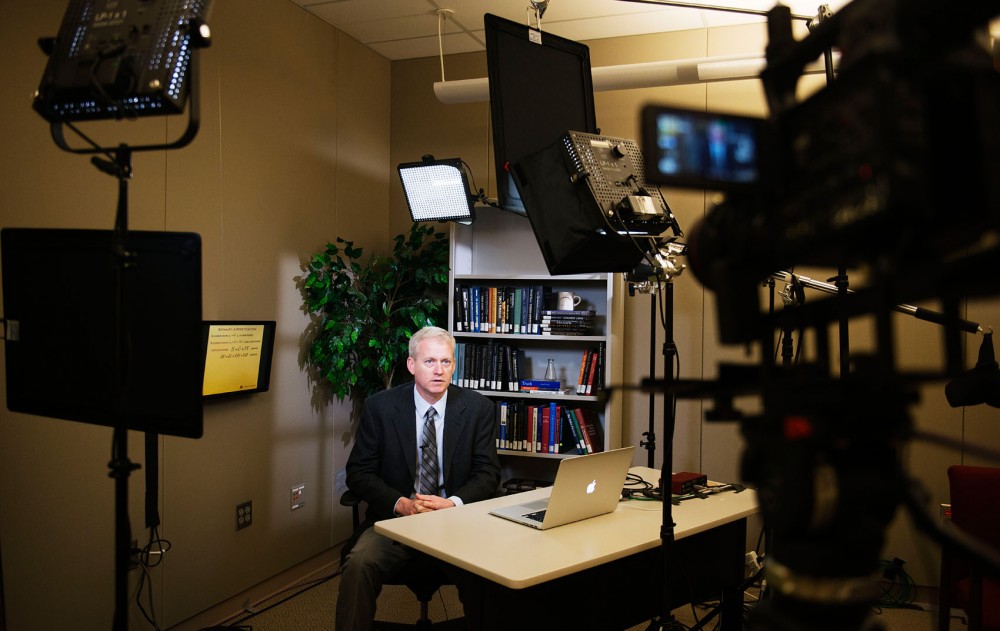Chris Cramer didn’t sleep much last semester.
The chemistry professor and four other University of Minnesota professors are volunteering hundreds of hours to teach free massive open online courses this summer.
MOOCs are open to an unlimited number of people from anywhere in the world who have access to the Internet, and the University’s MOOCs have drawn anywhere from about 8,000 to more than 16,000 students so far.
“I’ve probably put 400 hours into preparation,” said Cramer, whose course started May 20. “That’s a lot of time.”
Cramer isn’t the only one logging long hours on his MOOC. Assistant professor Jason Hill pushed his Sustainability of Food Systems class back from what was originally a May start date to mid-June because he needed more time to work on his lecture videos.
Hill taped interviews between him and other professors at the University for his class videos, which he said could help to create more interest in MOOCs at the University for the future.
“One of the wonderful things about the conversations I’ve been having with faculty is that they come to the studio with me, they see the process and then they can go back to other faculty members and talk about [the MOOC],” he said.
Cramer said his Statistical Molecular Thermodynamics class of more than 8,000 students has changed the way he prepares for the classroom version of the course he also teaches.
“[Professors] are used to creating our courses almost on our own,” he said. “You can’t do a MOOC that way.”
Cramer said he relies on a production team made up of staff from the Educational Technology Services, The Center for Teaching and Learning and University Libraries almost every day.
University librarian Nancy Sims and other team members have shifted job responsibilities to support MOOCs. Some on the team have devoted most of their time to working on the online courses since the University agreed to do them in February, she said.
“Sometimes people think of the library of just being buildings with books in them, but I think this has shown that this is not what we are,” she said. “The way the library folks have been able to just dive right in in a short time frame has shown a very high level of amazing talent.”
Karen Monsen, who is teaching a MOOC called Interprofessional Healthcare Informatics, said she also frequently leans on the team for help.
“They are the ones who really showed us about the in-video stuff,” she said, adding that they have also shown her how to see the real-time progress of data collection.
Sims said the classes reinforce the University’s land-grant mission “to provide resources and education to the public.”
“This is a great example of the way that MOOCs are being used to create something really accessible and applicable,” she said.
The five classes being offered online are also offered at the University for credit, which Monsen said has prompted questions from some students.
“I’ve heard that some students are concerned that they have to pay for this and others are getting it for free,” she said. “What [MOOC users] are getting is the content, not the course as it is delivered at the University of Minnesota.”
University students who are not in the MOOCs may reap some rewards from the massive online classes, however. Cramer said preparing for the online class has helped make his traditional course at the University better.
The University will retain the rights to the materials professors use in the MOOCs so they can be used in classrooms at the University.
“If you want to know if your materials are good, let 8,000 people see them and you will find out quickly if you made a mistake,” Cramer said, adding his online class has found at least one mistake in a video that he’s corrected.
Monsen is teaching her MOOC and University course simultaneously. She said the preparation she’s done for her massive online class prompted her to change a textbook she uses for her class at the University.
“It stretches your thinking to create material for a global audience,” she said.














